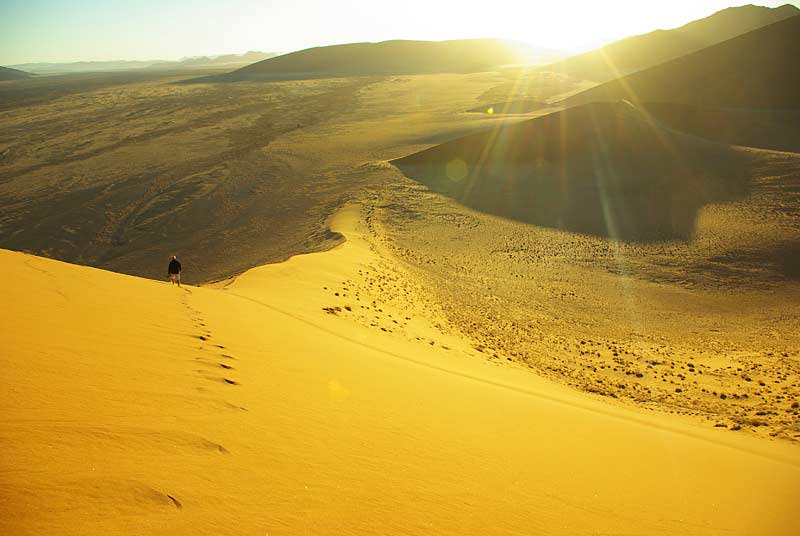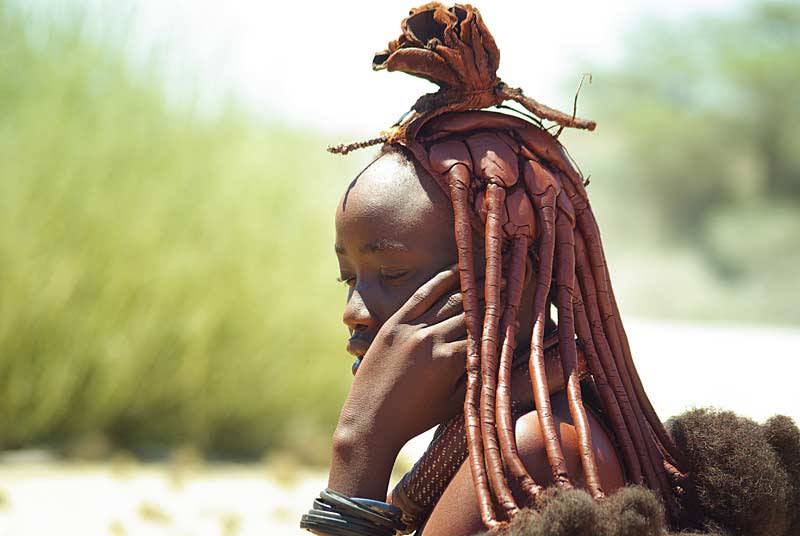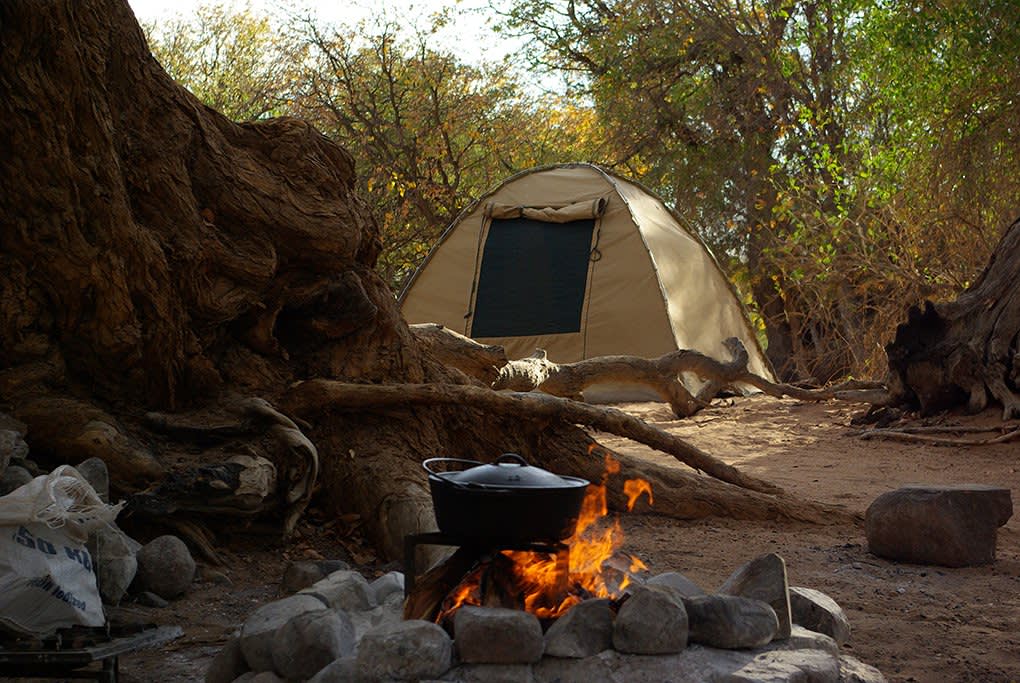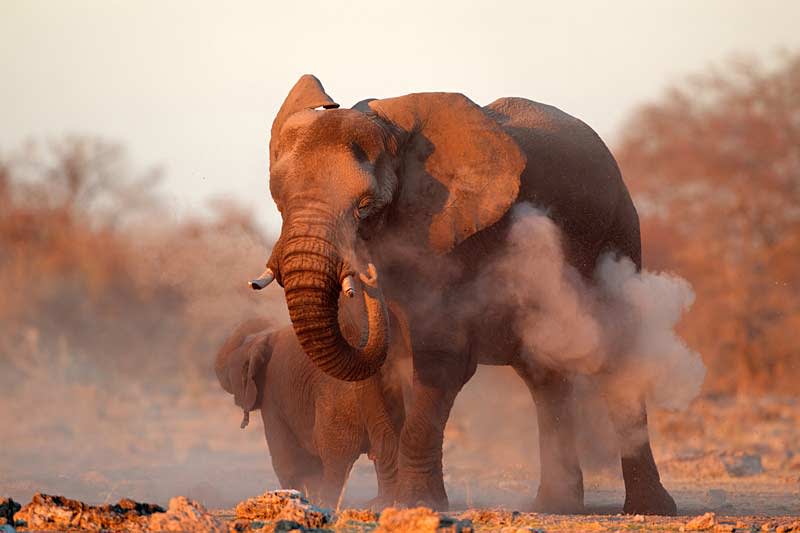“We’re not going back to camp yet. Not in this light” our leader, Durr, announces in his thick Afrikaans accent. “We’re not going up there are we?” a member of the group questions. He turns his head to face us at the helm of his indestructible 4×4 and smiles. After a vertical climb we gingerly clamber out of the vehicle and realise immediately why he’s brought us here. As the sun sets over the Hoanib Valley we witness a staggering panorama over the dunes, turning the sand beneath our feet a deep orange hue. I feel microscopic. A speck on the horizon of this magnificent country.
 Sossusvlei
Sossusvlei
We watch the sun as it disappears behind the mountains, overlooking the Himba village we visited earlier that day. One of the few nomadic tribes in Namibia that still practice their old-age customs, the Himbas give an incredible insight into how time can stand still while the rest of the world carries on around them. They’re perfectly content, living mainly off the land and honouring traditions passed on through generations. We watch inquisitively as they rub dark ochre and fat on their bodies, turning their skin the colour of cochineal. They laugh and smoke; this is their play time before they get back to work, making jewellery from scrap metal and carving tourist souvenirs from acacia and mopani wood.
 Himba tribeswoman
Himba tribeswoman
Namibia is a vast country with a tiny population of just over 2 million. Travelling through the Palmwag Concession, we realise after around 60km that we haven’t passed another vehicle since we entered. This area of remote wilderness is the size of Switzerland, visited by a mere 200 tourists per year. Our camp is tucked away within a spot of dense bush and we are acutely aware that there is nothing and no-one around us for miles. Just wild predators and their prey. It’s exhilarating, if a little unnerving. Dinner is well underway with pans of sizzling game meat and pots of rice and vegetables simmering on the blazing camp fire. We stare up at the canvas of stars illumining the sky and reflect on the adrenaline-charged game drive earlier that day…
 Camping Namibia
Camping Namibia
…creeping towards a wild Black Rhino on foot, we’re silent but for the faint click of camera shutters and the shuffling of gravel under foot as we shift our positions. We’ve been crouching in the same spot for over half an hour, willing this magnificent beast to come closer. The wind drops, the rhino grunts. We’re 20 metres away. The rhino will outrun us easily. Our leader surreptitiously picks up a rock – “no photos” he whispers.
 Elephants in Etosha
Elephants in Etosha
We approach the Okaukuejo watering hole just inside the gates of Etosha National Park at sunset. A host of spectator’s are lined up, tripods and cameras at the ready. We know that if we wait long enough the wildlife will come. The sun is setting, reflecting golden tones on to the still water. A lowly Springbok tiptoes stealthily on the pebbles, dipping its head to drink. There’s a strict silence rule at this watering hole. We hear a trumpeting noise in the distance and the springbok flees; everyone looks around with questioning expressions. Whatever is coming is loud, and big. Out of the bushes charge four large (and seemingly angry) elephants, heading towards the crowd of wide-eyed spectators. The smell of elephant musk is over-powering and for the first time, I realise the danger of being in such close proximity to these animals. The hierarchy of the animal kingdom is evident, as only after the elephants have their fill are the zebras, giraffe, springbok and jackals allowed to have their time at the water’s edge. Spending two weeks within this magnificent backdrop was one of the most inspiring travel experiences of my life. You don’t forget the first time you encounter animals in the wild. I definitely feel more alive here. B
y Anna Faulder who travelled on 4WD Desert Explorer (Namibia) in July 2012 See all Namibia adventures.




